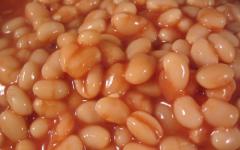Brined cheese made from cow, goat or sheep milk is feta cheese. This product is prepared by soaking it in brine for 2 months. This makes the cheese, although salty, healthy: it is rich in calcium and protein. But the disadvantage of this cheese is that it requires special storage conditions.
How to store cheese so that it does not spoil
Why do we need special storage conditions for cheese?
Not all lovers of this product know how to properly store feta cheese. And since it is most often sold without the brine in which it was prepared, its consumer qualities are soon lost. If stored improperly, the edges of the cheese become weathered and stale. And the common method of storing cheese in a plastic bag or cling film leads to spoilage of the product. The cheese becomes slippery, an unpleasant odor appears - it can no longer be consumed in this form.
Features of storing cheese
Before buying this cheese, you need to know how to store feta cheese at home so that it remains tasty and fresh. These rules will help you preserve this cheese well:
You need to buy only high-quality, fresh cheese. The packaging should not be swollen and the cheese should not crumble;
Cheese cheese, which is sold in a container with brine, is better stored. It should not be poured out; it keeps the product in the refrigerator for up to two weeks;
Some housewives who do not know how to store cheese fill it with clean water. But this method is only suitable for soaking cheese from excess salt. If you keep cheese in unsalted water for a long time, it will begin to crumble and spoil.
How to properly store cheese?
If in the same packaging in which it was sold, then after opening - no more than 5 days;
You can wrap a piece of cheese in food foil and put it in an enamel container with a lid - this way it stays fresh for two weeks;
You can store cheese in a plastic or enamel container with a lid for just two to three days.
Brynza is a soft brine cheese, most often made from sheep, and has a more delicate consistency compared to ordinary cheeses. The main problem when storing it is how to preserve its high moisture content. After all, the more the cheese dries out, the more its taste deteriorates.
Storing cheese at home
In stores, cheese is sold either in sealed packaging or by weight. In the latter case, it is immersed in a special brine, which acts as a preservative, preventing it from deteriorating. The storage conditions for cheese are often written on the packaging. However, regardless of them, you need:
- temperature not exceeding 6-8 o C and. as a result, a refrigerator;
- airtight packaging, usually a plastic container with a tight-fitting lid. But in extreme cases, plastic film or foil will do. You can also give preference to an enamel or metal container, and cover it with cling film on top;
- lack of contact with products that have a pronounced odor.
- Bryndza sold in brine can be stored for up to 60 days. Of course, if you don’t take it out from there and put it into another container, and after cutting off the desired plate, put it back into the brine and into the refrigerator. If there is not enough brine, you can make it yourself. To do this, give it 18-20% strength by dissolving 180-200 g of salt in 1 liter of cold boiled water, and then pour it over the cheese. By the way, there is an interesting way to check the quality of the brine: a thoroughly washed chicken egg is immersed in it. It should float to the surface, and its diameter that appears above the brine should be approximately the same as that of a 10-ruble coin. If this effect is not achieved, it makes sense to add more salt. It should be noted that the most suitable material for storing cheese in brine is not plastic, but glass. After all, it ripens in brine and is therefore vulnerable to plastic chemicals that can pass to it through the brine. The quality of plastic containers should be approached very carefully;
- Bryndza sold without brine can be placed in a homemade brine. This way it can be stored for up to 30 days. If there is no need for long-term storage, simply wrapping it in foil or film or an airtight container is sufficient. The cheese will keep well for 3-4 days. If this period is exceeded, the cheese may suffocate, become slippery, and its taste will significantly deteriorate.
A good housewife notices the proper quality of feta cheese immediately: such cheese has a white or milky color, crumbles beautifully without sticking to the knife, and has the same consistency when cut, it is dense, but not loose.
At the same time, the type of milk the cheese is made from - sometimes it is made not from sheep, but from cow - does not in any way affect the rules for its storage, since, despite the different chemical composition, the finished cheeses are similar in their physical properties. There are minor nuances only in storing feta cheese made at home. Here the shelf life will be influenced by the cooking technology. And if the cheese is sufficiently saturated with salt, its storage in a special solution can be extended up to six months. It is only important not to let it sour, and to do this, change the brine solution monthly, each time weakening the salt concentration and gradually bringing it to 15%. But no less: a slightly salted solution leads to softening of the cheese.
If the cheese is too salty, then before eating it, it is recommended to pour boiling water over it or, alternatively, immerse it in boiled water or milk for several hours. It is better to put drying cheese in the freezer. This will change its taste, but nevertheless it will be edible.
Brynza is a soft brine cheese made with rennet from different types of milk. Used for salads, as a filling for dumplings and pies, and as an independent snack. Brynza is a constant companion to the national cuisine of Moldova, Romania, the entire Carpathian Mountains region, as well as the North Caucasus. A very healthy cheese, rich in milk proteins, calcium and phosphorus.
How to make homemade cheese from cow's milk
There are many ways to make cow's milk cheese at home. Some of them are simple and fast, but far from real cooking technology. Others require labor and time, but are closest to the true taste. Bryndza prepared according to different recipes will be different, but in any case it will have a pleasant salty sour-milk taste.
Let's look at two recipes: the easiest one, which does not require special ingredients; and the most technologically correct - the same one used by large enterprises and farms.
Recipe for making cheese using technology
For any cheese recipe, only fresh farm or homemade milk is suitable. Pasteurized store-bought will not work. If you are not sure about the quality of milk, you can pasteurize it yourself for 20 minutes at 70-75 ° C, but no more, and then let it cool.
To prepare 1.2-1.5 kg of cheese you will need:
- 10 liters of milk;
- 1 ml (1/4 tsp) solution of 10% calcium chloride, diluted in 50 ml of drinking water;
- rennet - according to the manufacturer's instructions, diluted in 50 ml of drinking water.
For the brine:
- 60 g salt;
- 2 glasses of drinking water.
Heat the milk to 33-35° C. Pour in the diluted calcium chloride and rennet, mix well. Bring the mixture to 33-35° C, turn off the heat, cover the pan with a lid, and leave for 40 minutes. If the temperature of the mixture drops quickly, turn the heat to low to maintain it, but do not overheat.
After the specified time, check the clot - it should be hard and the whey should be clear. If the condition is not achieved, leave it alone for another 10 minutes.
Cut the cheese curd into squares of about 2 cm, stir for 15 minutes, then leave for 10 minutes.
Use a mug to scoop out most of the whey into a separate container. Line a colander with 2-3 layers of gauze, drain the entire mass. Leave without pressing for 1 hour at room temperature, placing a container under a colander to drain the whey.
After 1 hour, take the cheese curd with your hands and turn it over in a colander. Leave for another 1 hour.
Check the curd with your finger - if it is hard and elastic, you can put it in a convenient container for storage, but if the cheese is still soft, put a little pressure on it and put it in the refrigerator for 8-10 hours.
When the cheese is ready, cut it into pieces with sides about 10 cm.
Prepare the brine: boil water and dissolve salt in it. Leave to cool to room temperature. Pour brine over the pieces of cheese, leave for a day in the refrigerator for pickling, after which the product can be consumed and stored in the refrigerator for up to 7-10 days.
Focus on your taste: if after a day of salting the taste of the cheese is quite salty, drain the brine and store without it for up to 7 days. If you want it saltier, leave it in brine.
How to preserve cheese for a long time
Cheese cheese is easy to prepare and lasts for a long time. Then, for salting, take the whey that separated during the making of the cheese. For each liter of liquid, take 200 g of salt, 8 ml of 10% calcium chloride solution and 1 ml of 6% vinegar.
Place the pieces of cheese into glass jars, fill with brine, keep in the refrigerator for 5 days, then store in a cool, dark place. If there is no cold basement or cellar, then store it in the refrigerator.
Cheese cheese can be stored in a 20% salt solution for several months.

A simple recipe for homemade milk cheese
The fastest way to prepare feta cheese at home is to curdle cow's milk with vinegar.
You will need:
- 3 liters of milk;
- 3 tbsp. l. vinegar 9% (the proportion of vinegar is calculated as follows: one tablespoon for every liter of milk);
- 1 tsp. salt
- 1 glass of boiled water.
Pour the milk into a saucepan and put it on the stove to boil. Measure out the required amount of vinegar. When the milk boils, turn off the heat and pour in the acid. The milk begins to curdle, clots form, and whey separates. Stir for two minutes.
Fold the gauze into three or four layers, line a colander with it and drain the contents of the pan. Tie the fabric and hang it to express for 20 minutes. After the specified time, place the cheese directly in gauze under a press (one filled liter jar is enough for this amount of cheese), and leave for 2-2.5 hours. During this time, all the whey will be filtered out, the cheese will take shape and cool.
To make brine, dissolve salt in water. Fill the resulting “pancake” with cheese and put it in the refrigerator for a day. This way the cheese will be salted evenly and can be stored in the refrigerator for up to 7 days. The amount of salt can be reduced if you prefer lightly salted cheese, but you need to eat this product faster.
Three liters of cow's milk yields about 300-350 grams of cheese.
Brynza is a fermented milk product originally from eastern Arabia. The history of the appearance of cheese is very interesting. A merchant, setting off on a long journey, poured milk in reserve into a sheepskin he had taken with him. After some time, he decided to stop and have a snack. Opening the wineskin, he saw only a cloudy liquid and a piece of white mass at the bottom. Having tried it, he was amazed, the taste was excellent. The article will tell you how to prepare feta cheese and preserve it.
Brynza is prepared in several ways. With natural milk fermentation, for example with sour cream. Or using a ready-made starter enzyme. You can buy it in specialized stores or order it online.
Sourdough is also a natural bacterial component that helps to quickly ferment the milk component of feta cheese or cheese. There are several varieties of starter cultures: with preliminary activation in milk, and then adding it to the milk mixture to prepare feta cheese directly. And direct addition: this starter is added directly to the milk mixture when preparing feta cheese or cheese. The amount of starter needed to prepare feta cheese is small. Therefore, one sachet will last for quite a long time. There is sourdough in dry form (granules, powder), and in liquid form.
Brine for cheese

After preparing the cheese, you can immediately cut it and enjoy the wonderful dairy product, or you can soak it for some time in salty brine. It is also used for long-term storage of the resulting product. For example, with a high concentration of salt in the brine, feta cheese can be stored for several years. Salt has high preservative properties.
In case of short-term aging in brine, the whey formed after preparing the cheese can be used for its preparation. You can add salt directly to the warm liquid, mix thoroughly and place the cheese into the solution. If long-term storage is expected, then the brine should be prepared using boiled plain water.
The proportions for each cheese are different. Some people like it saltier, others like it sweeter. For long-term storage in brine, the salt concentration is quite high.
Form for cheese

The form in which cheese or feta cheese is prepared is very important. Historically, we are accustomed to seeing some cheeses only as round ones, while others may be in the form of bars. There are both plastic cheese molds and more durable metal ones on sale. Shapes can be round, rectangular, oval and even heart-shaped. They differ accordingly in volume.
Step-by-step description of making cheese at home

This recipe is quite simple and does not require the purchase of expensive components or a lot of time.
To make the freshest homemade cheese you will need:
- two liters of regular milk of medium fat content;
- one can of sour cream with a volume of 400-500 ml and a fat content of 15-20%;
- 5-6 chicken eggs;
- one tablespoon of salt.
Step-by-step preparation:
- Pour the milk into a non-stick container.
- Put on fire to boil.
- Meanwhile, in a separate container, beat eggs and sour cream.
- Gradually bring the milk to a boil. Approximate temperature 80-85 degrees.
- At this time, gradually pour the egg-sour cream mixture into the milk, stirring it constantly.
- Continue cooking the mixture for about ten minutes, remembering to stir it.
- Soon flakes will begin to form and the whey will separate.
- At this time, it is necessary to drain the resulting mass into a pre-prepared mold or colander with several layers of clean gauze.
- Place a press weighing 1-2 kg on the cheese.
- Leave to compress for several hours.
- You can eat the finished cheese, or you can leave it in brine overnight to ripen.
How to make feta cheese with pepsin

Pepsin is nothing more than a leaven, which was discussed at the very beginning of the article. What are the benefits of using pepsin when making cheese? The enzyme allows milk to reach the stage of so-called souring very quickly.
This is true, for example, for goat milk, which during the fermentation process acquires not entirely pleasant notes of aroma. And in general, it’s much easier than waiting a day and catching the moment when the milk is ready for cheese production. Pepsin is added in quantities according to the instructions to milk preheated to the required temperature. Then spices and salt are added, and within a few minutes the milk acquires the desired consistency for preparing various types of cheeses.
Storing cheese

Freshly prepared cheese can be stored for 3-4 days in the refrigerator. If the cheese is saltier, the shelf life increases to 5-7 days. To preserve the cheese for a long time, you can fill it with brine. Cheeses are stored this way, for example, in Greece, Romania, and Moldova. Small blocks of cheese are placed in a glass container (jar) quite tightly to each other and filled with a concentrated salt solution. Sometimes you can find cheese drenched in olive oil. The shelf life of cheese in this form reaches several years, provided it is kept in the refrigerator.
Among other products in my diet, one of the first places is occupied by brine cheese - feta cheese. But in order to stock up on this dish, you need to comply with special conditions and adhere to several rules. I'll tell you how to store cheese at home.
How is feta cheese made?
To begin with, I suggest finding out what cheese is made from. This cheese can be made from sheep, goat and cow's milk. The product is soaked in a special brine for a long time (up to 2 months). Because of this, the cheese becomes salty and easily digestible.

The storage features of cheese are directly related to its production. Therefore, it is very important to buy a quality product.
What to look for when purchasing:
- Color. A fresh product should be milky or white in color.
- Structure. Dense, homogeneous consistency. When slicing, it should not crumble too much and stick to the knife.

- Brine. It is better to buy cheese in brine, as it will last much longer (the photo shows an example of packaging the product in brine).

- Price. Too low a cost may be due to the use of low-quality raw materials.
Ask the seller to cut a piece for testing if the cheese is sold by weight. There should be a pronounced salty-milky taste.
- Size. It is better to buy this product in small portions.
Storing pickled cheese
Brynza can be stored in several ways:
Option 1: At room temperature
You need to understand that it will not be possible to preserve cheese at room temperature for a long time. Like all fermented milk products, it quickly deteriorates and becomes unfit for consumption.

Bryndza can be stored at home at constant room temperature:
- in store packaging – 24 hours;
- in brine – 48 hours;
- without brine – no more than 6-8 hours.
Option 2. In the refrigerator compartment
The instructions suggest storing such cheese depending on its packaging:
| Image | Recommendations |
 |
Store packaging
|
 |
Enameled containers
If you wrap the cheese in foil and put it in an enamel container with a lid, the shelf life will be 14 days.
|
 |
Plastic container
If you put the cheese in a plastic container with a lid and put it in the refrigerator, the shelf life will be no more than 2-3 days. |
 |
Brine
If you prepare a special brine for cheese at home and pour it over the product, the shelf life will be 2 weeks or more. I’ll tell you below how to make brine for cheese.
|
Option 3. In the freezer
You can store this fermented milk product in the freezer. It is necessary to wrap the cheese in cling film or foil and place it on the lowest shelf of the freezer for 8 months.

It is important to consider that after freezing and thawing, the cheese will lose most of its nutrients and will crumble very much. Use this method only in extreme cases.
Recipe 2. Brine for homemade cheese with herbs Mix one pinch each of cumin, hot red pepper, dill, parsley and garlic. Add this mixture to the previously prepared saline solution according to the above method.
If desired, you can add vegetable oil and mustard seeds.
If you prepare brine for cheese - the recipe for which is indicated in the table - you can significantly improve the taste of the product and extend its shelf life.
Bottom line
We found out how to store cheese in different conditions. Choose a method depending on the volume of the product and the required shelf life. The video in this article will tell you about all the nuances of preparing and preparing brine for cheese. If you have other recipes, write them in the comments, I would be grateful!









